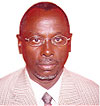More books have been written about the genocide in Rwanda than perhaps on the entire history of the country. Most of these have been journal;ists’ reports, eye witness accounts, stories of survivors, or scholarly works. Of all these, the academic ones have been the least satisfactory.


More books have been written about the genocide in Rwanda than perhaps on the entire history of the country.
Most of these have been journal;ists’ reports, eye witness accounts, stories of survivors, or scholarly works. Of all these, the academic ones have been the least satisfactory.
The very nature of scholarly or academic writing makes fair treatment of the gnocide difficult. Academic writing is supposed to be objective, factual, analytical and detached.
For these conditions to be fulfilled, there must be reasonable distance between the writer and the subject in terms of time, emotions and the individuals’ ideology.
Most of what appears as academic writing on the genocide in Rwanda was written when the events were still too raw to render themselves to detached analysis. They are either too emotonally involved, ideologically slanted or meant to fit into a preconceived thesis to be objective or credible.
The most recent such work to come under review is The Politics of Genocide by Edward Herman and David Patterson..The New Times published a review of this book by Gerald Caplan a few weeks ago in which he dismissed the work of the two authors as neither scholarly nor a useful account of the genocide in Rwanda.
Their work was a shameless and dangerous dissemination of genocide denial which they sought to hide behind academic respectability, Caplan argued. These so-called scholars quote from the works of their own circle to give their work a semblance of scholarship.
Now Caplan’s review has come under criticism from Oliver Kearns, an undergraduate at the University of St Andrews. In a review that appeared in Pambazuka News July 8, Kearns accuses Caplan of confusing the question by "downplaying the diversity of opinion ...and by denouncing those who draw attention to the diverse modes of violence in Rwanda throughout 1994.”
He also prefers to call the genocide "violence” falling into the Orwellian characterisation of those who want to hide unpleasant facts by giving them less offensive descriptions or by resorting to euphemism.
By insisting on a diversity of opinions and modes of violence and lauding the scholarly methodology of associates of Herman and Patterson, Kearns, perhaps unwittingly, subscribes to the argument of duble genocide and even genocide denial.
But it is the the method of these writers that one must take issue. Can there be a diversity of opinions on the genocide? One either admits that it happened or that it did not. There cannot be other opinions. Seeking other opinions would almost certainly entail reworking events to validate those opinions.
Again, with genocide, there cannot be too many sides. There are only victims and perpetrators (and their backers), and indifferent onlookers.
You cannot bring in another factor of victims killing their murderers, which is what Kearns suggests when he refers to "diverse modes of violence”, and use this to mitigate genocide. In any event, can the action of victims fighting to avoid extermination be placed on the same plane as genocide?
Everyone knows that valid conclusions are based on reliable data collected from credible sources. The source of data for the writers that Kearns defends against "unfair criticism” from Caplan are the human rights organisations such as Human Rights Watch and Amnesty International, and some diplomats.
All of these are not disinterested sources of information. The rights groups have demonstrated an open bias towards Rwanda. The diplomats have also shown nationalistic arrogance or desire to cover up their role in the genocide.
In addition, where such data actually exists, it is not scientifically collected and analysed. Very often they rely on reports by people on one side of the story, never on both sides.
The picture that comes from this is always incomplete. Such selective collection and use of information cannot be the basis of valid and reliable findings and conclusion.
Collectors of data on which questionable conclusions on the genocide in Rwanda are based are rarely on the ground. Many of them have never been to the country.
They draw their information and conclusions from the writings of others who also based theirs on similar methods and therefore spread the same wrong information. Kearns falls into this mode of perpetuating an untruth.
The worst case of pretence to scholarship is in the use of statistics by the group that Kearns defends to back a thesis arrived at before hand. It is well-known that census figures were consistently manipulated by the MRND regime to create the impression of a population divided between a massive majority and an insignificant minority and then use this supposed immutable division as the basis for the denial of any rights to the minority.
Similar manipulation is in evidence today where Herman, Paterson, Erlinder and others use population census figures to claim that more Hutu than Tutsi were killed in the genocide. This is obviously a not-too-subtle way to deny the genocide. It is even claim the genocide of a different group.
Political manipulation of the number of people killed in the genocide is not new. There have been constant revision in the international media of the number killed from more than one million people to 800 and then 500. At this rate of revision the number will have been reduced to a few insignificant souls in the next few years.
This is not a wild or far-fetched projection. If scholarly methods are selectively used (and abused) to distort history and invert the truth, they will create an Orwellian memory hole through which part of our history will disappear, leaving only the recreated, revised version.
That sort of alteration is indefensible and cannot be allowed to happen..


